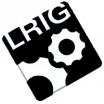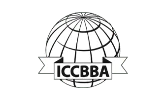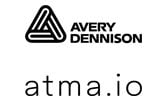RFID tags are quickly becoming ubiquitous in modern day society. They are allowing everyday objects to become “smart” by connecting to other devices and systems without physical contact.
For many companies, this technology is useful throughout manufacturing and processing practices. By implementing an RFID labeling strategy in your facility you can improve throughput speeds, reduce labor and improve tracking all at once.
A lot goes into a label that’s capable of so much, and here we’ll take a look into each layer of an RFID label and its purpose. Each layer requires special engineering to ensure the system can hold up to the conditions of the intended application.
Layer 1: Release Liner
The very bottom layer is the release liner or backing. This layer protects the adhesive during storage and is removed prior to use.
The release liner is designed to work in conjunction with the adhesive layer to ensure the labels remain attached to the liner prior to use, but can also be peeled away easily. If the liner isn’t engineered properly it can lead to tearing of the label or incomplete removal of the liner, interrupting processes.
Layer 2: Bottom Adhesive
The bottom adhesive layer is generally engineered for the intended use of the label. Since this is the adhesive that will keep the label on the tagged object, it’s critical it is strong enough to withstand the application environment but can still be easily peeled from the release liner.
Layer 3: RFID Inlay
On top of the adhesive is the RFID inlay. The inlay is what puts the “RFID” in the label, and is actually comprised of several parts including the substrate, antenna and integrated circuit:
Antenna
The antenna is made of coiled conductive metal which interacts with the reader/antenna to transmit the data held on the integrated circuit.
Integrated Circuit
The integrated circuit (sometimes abbreviated as ‘IC’ or referred to as the “chip”) is what actually contains the stored data.
Substrate
The substrate is a surface that forms a protective covering when adhered to the antenna and integrated circuit.
Typically your integration provider will help you find the right type of RFID inlay for your application, environment and expectations. Finding the right RFID frequency and type for your processes will take a lot of discussion, observation, testing and time, but is necessary to ensure process improvement.
Layer 4: Face Material
The next layer is the face material. The purpose of this paper-like material is to hold the receiver coat, onto which the printer will transfer the image (in the case labels are being printed on-demand) as well as to seal in the RFID inlay.
The face material will also need to be able to withstand your processes. If your samples are expected to withstand chemical exposures, extreme temperatures or abrasive automation equipment the face material will need to be engineered to remain intact throughout.
Layer 5: Protective Coating
Finally, a protective top coat may be applied. This will only happen if the customer chooses to have a top coat applied and only if the labels are being supplied pre-printed. The top coating might have a gloss or matte finish depending on application needs and aesthetic preferences. Similar to the face material, the top coat will need to be able to withstand your processes.
The end result is a “sandwich” of adhesives, topcoats, and an RFID inlay that are meticulously engineered to ensure survival and functionality in your environment.
While there is a lot that goes into an RFID label, it’s important to remember that the RFID label itself is only one piece of an overall RFID system and solution. This is why it is important to work with an experienced solutions provider to ensure you achieve maximum ROI on your RFID investment.













